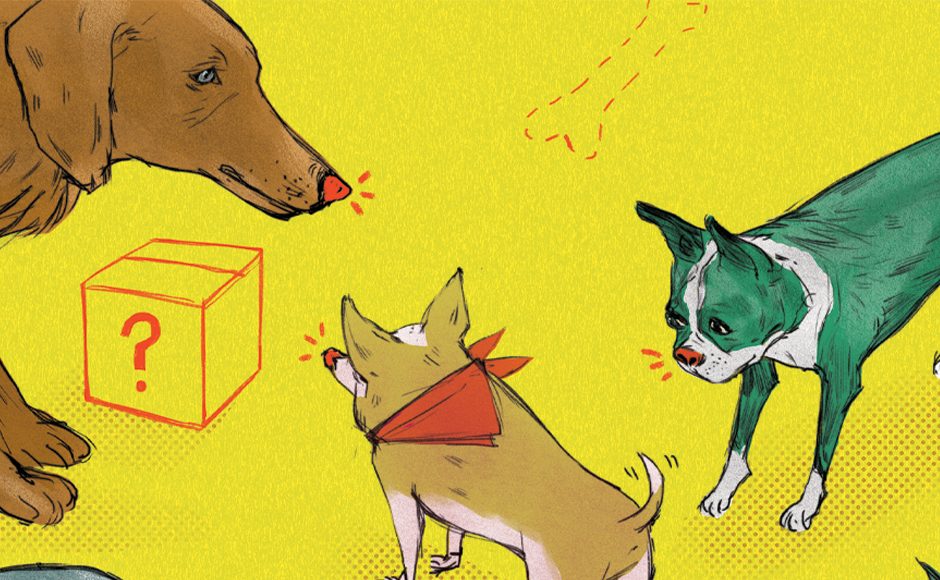

Dog Decoder
How to understand your dog's bark + "read" your dog's tail
Types of Barks:
1. Sound the alarm – A rapid string of two to four barks with pauses between is the most common form of barking. It means, roughly, “There’s something going on that should be checked out.” Continuous barking at a lower pitch and slower suggests the dog senses an imminent problem. It means “Danger is very close. Get ready to defend yourself!”
2. Hey there – One or two sharp, short barks of high or midrange pitch is the most typical greeting sound, and it usually replaces alarm barks when a visitor is recognized as friendly. Many people are greeted in this way when they walk through the door. The message is “Hello!”
3. Let’s hang out – A long string of solitary barks with a deliberate pause after each one is a sign of a lonely dog asking for companionship.
4. Time for a tussle – A stutter bark, which sounds something like “harr-ruff” is usually given with front legs flat on the ground and the rear held high. It means, simply,
“Let’s play!”
Types of Wags:

2. Satisfaction – A broad tail wag is a friendly “I’m not challenging or threatening you.” In many contexts it may also mean “I’m pleased,” and it is the closest thing to the popular conception of the “happiness” wag, especially if the tail seems to drag the dog’s hips.
3. Confusion – A slow wag with tail at “half mast” is less social than most of the other tail signals. Slow wags with the tail in neither a particularly dominant (high) nor submissive (low) position signal insecurity or uncertainty about what to do next.
4. Fight or flight – Small, high-speed tail movements that give the impression of vibrating are a sign that the dog is about to take action (run or fight, usually). If the tail is held high and vibrating, it signals what is most likely an active threat.
Excerpted from Do Dogs Dream?: Nearly Everything Your Dog Wants You to Know by Stanley Coren. Copyright by Stanley Coren. With the permission of the publisher, W.W. Norton & Company, Inc.
Join the newsletter and never miss out on dog content again!
"*" indicates required fields
By clicking the arrow, you agree to our web Terms of Use and Privacy & Cookie Policy. Easy unsubscribe links are provided in every email.





